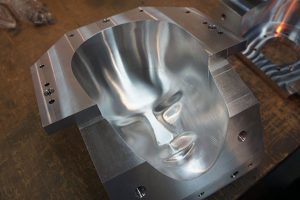Clacton-based Dalau, which says it is the largest specialist supplier and manufacturer of plastic parts in the UK, believes it has identified the ideal five-axis production centre for machining plastics.

Chosen from a list of no less than 18 potential suppliers, the machine is a Hermle five-axis machining centre that has been modified to accept vacuum work-holding fixtures. The machine was supplied by the German manufacturer’s UK sales and service agent, Geo Kingsbury, which also carried out the customisation.
The Hermle installation is part of a £1m spend on machine tools at the Clacton factory within the past year to cope with a steep increase in demand for Dalau’s machined components across numerous industries.
Production manager Ben Bonds says: “Floor space is limited here and so is the roof height. The Hermle C 250 machining centre offered generous axis travels of 600, 550 and 450 mm in a compact footprint and just fitted in below the ceiling by a matter of inches. It was also advantageous that the optional Hermle tool magazine extension we ordered for increasing the number of cutters from 30 to 80 comes as a separate unit, which simplified transportation up a ramp and through a narrow opening.
“Problems during automatic tool change are one of the biggest causes of downtime here, so we were keen to avoid machines with a swing-arm tool changer,” he adds. “In contrast, the Hermle ATC system, where the spindle travels through a shutter door at the back of the machine and picks the tool directly from the magazine, has proved to be very reliable.”
For further information www.geokingsbury.com























